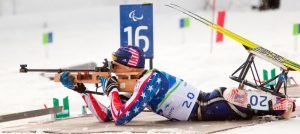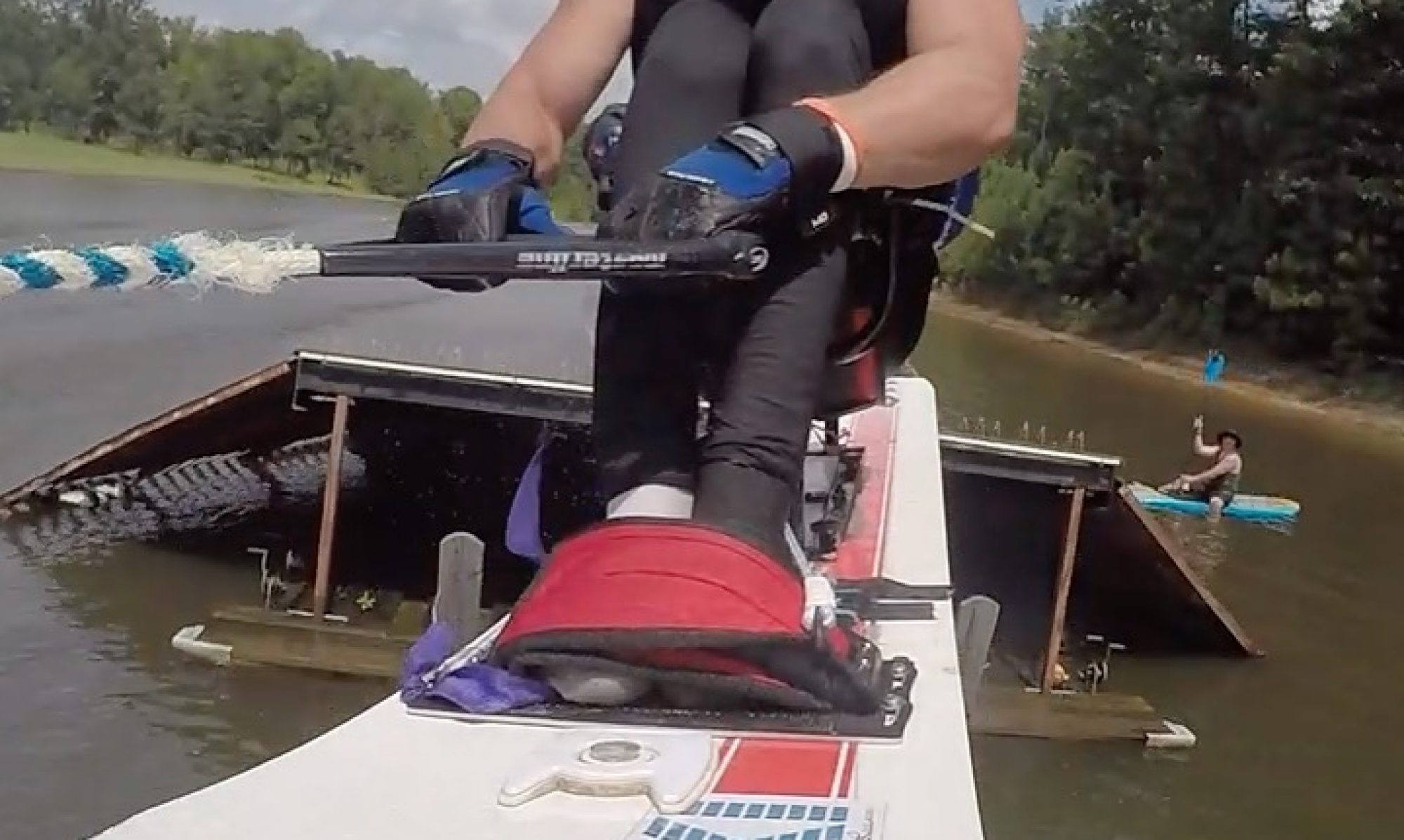
Biathlon is a sport that combines cross-country skiing and rifle shooting. This requires the athletes to alternate between the skills and physical endurance of skiing and shooting accuracy during a competition.
Adaptive biathletes are athletes with a disability. These athletes are classified as standing, sitting or skiers with a visual impairment. The sport combines cross-country skiing and rifle shooting, but differs from able-body biathlon because skiers must always shoot from a prone position. Athlete start times are staggered by a 30 second interval system.
At Empire State Winter Games, we run a short-distance event where skiers race a 1.5-kilometer loop three times for a total of 4.5 kilometers, stopping twice to take five shots at a target placed 10 meters away. Each target has five plates in a row that must be hit within a 15-millimeter bulls-eye. A 150 meter penalty loop must be skied for each missed shot. The International Paralympic Committee uses the Nordic Percentage System to equalize categories and determine the gold, silver and bronze medal positions.
The equipment
Most standing and visually impaired athlete use the same skis and poles as able-bodied skiers. For the shooting portion, visually impaired skiers use an electronic system that sends out acoustic signals to indicate when they are nearing the target.
Sitting skiers use skis that are specially fit to a device called a sit-ski. This is a chair attached to a pair of skis, which allows a person with a lower-body disability to ski using poles and their upper body strength.
At Empire State Winter Games, we will provide equipment to anyone who cannot provide their own.
You may register for any event within biathlon for a single fee.
Registration fees are non-refundable. In the event of a medical or family emergency a refund may be given. A refund request must be made in writing to be considered.

